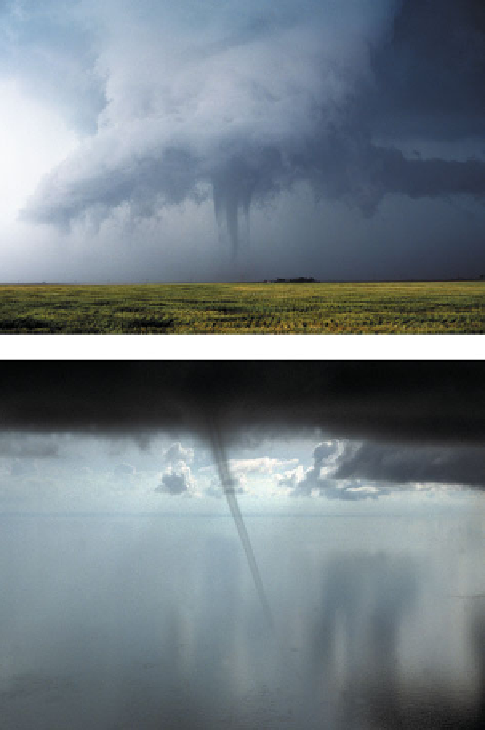Geoscience Reference
In-Depth Information
Figure 6.56. (Top) Double-walled condensation funnel in a tornado in southwestern Nebraska
on June 10, 2004. There is an inner condensation funnel and an outer sheath, which is opaque
when looked at side on. (Bottom) Hollow condensation ring in a waterspout in the Florida
Keys, as seen from a NOAA helicopter on August 28, 1993. The condensation funnel appears
translucent, except at the right and left edges, where the integrated amount of condensate along
the line of sight is deeper (photographs by the author).
sheet (
Figures 6.57
). This annulus of strong shear vorticity (perhaps augmented by
the annulus of convergence that accompanies the rising branch of vertical circula-
tion) is barotropically unstable as a vortex sheet and breaks down into multiple,
subtornado-scale vortices (suction vortices). First, two small-scale, ''secondary''
vortices form; with increasing swirl ratio, three to six vortices occur. Secondary,
satellite vortices are also seen in some dust devils (
Figure 6.58
). Wind speeds in
secondary vortices can be extremely high, but only very locally and only for very
short periods of time.

Search WWH ::

Custom Search